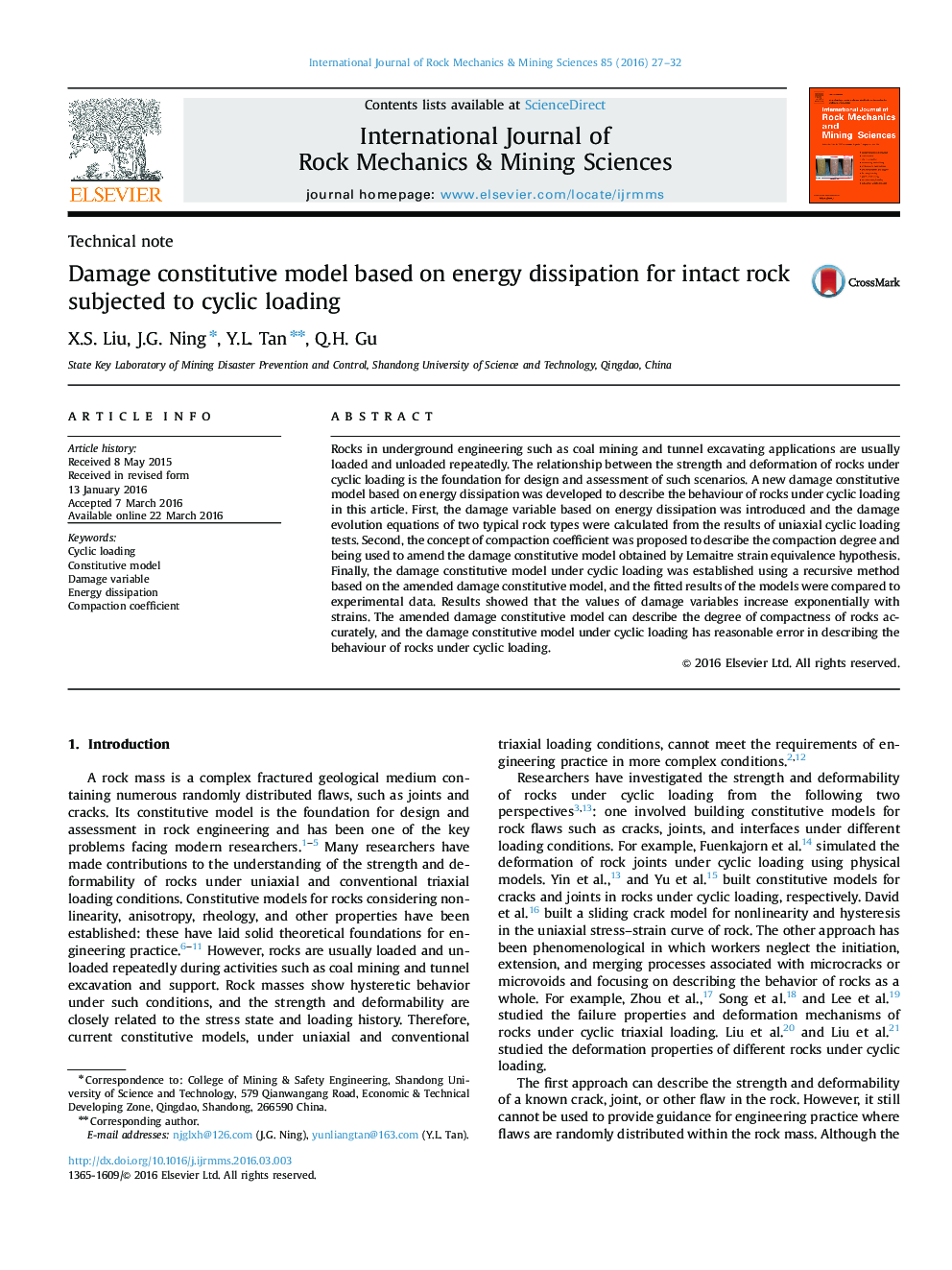| Article ID | Journal | Published Year | Pages | File Type |
|---|---|---|---|---|
| 808988 | International Journal of Rock Mechanics and Mining Sciences | 2016 | 6 Pages |
•The damage evolution equations based on energy dissipation of rocks were obtained.•A coefficient quantitatively describing the degree of compactness of rocks was proposed.•A damage constitutive model for rocks under cyclic loading was developed.•Experimental results verified the valid of the models.
Rocks in underground engineering such as coal mining and tunnel excavating applications are usually loaded and unloaded repeatedly. The relationship between the strength and deformation of rocks under cyclic loading is the foundation for design and assessment of such scenarios. A new damage constitutive model based on energy dissipation was developed to describe the behaviour of rocks under cyclic loading in this article. First, the damage variable based on energy dissipation was introduced and the damage evolution equations of two typical rock types were calculated from the results of uniaxial cyclic loading tests. Second, the concept of compaction coefficient was proposed to describe the compaction degree and being used to amend the damage constitutive model obtained by Lemaitre strain equivalence hypothesis. Finally, the damage constitutive model under cyclic loading was established using a recursive method based on the amended damage constitutive model, and the fitted results of the models were compared to experimental data. Results showed that the values of damage variables increase exponentially with strains. The amended damage constitutive model can describe the degree of compactness of rocks accurately, and the damage constitutive model under cyclic loading has reasonable error in describing the behaviour of rocks under cyclic loading.
